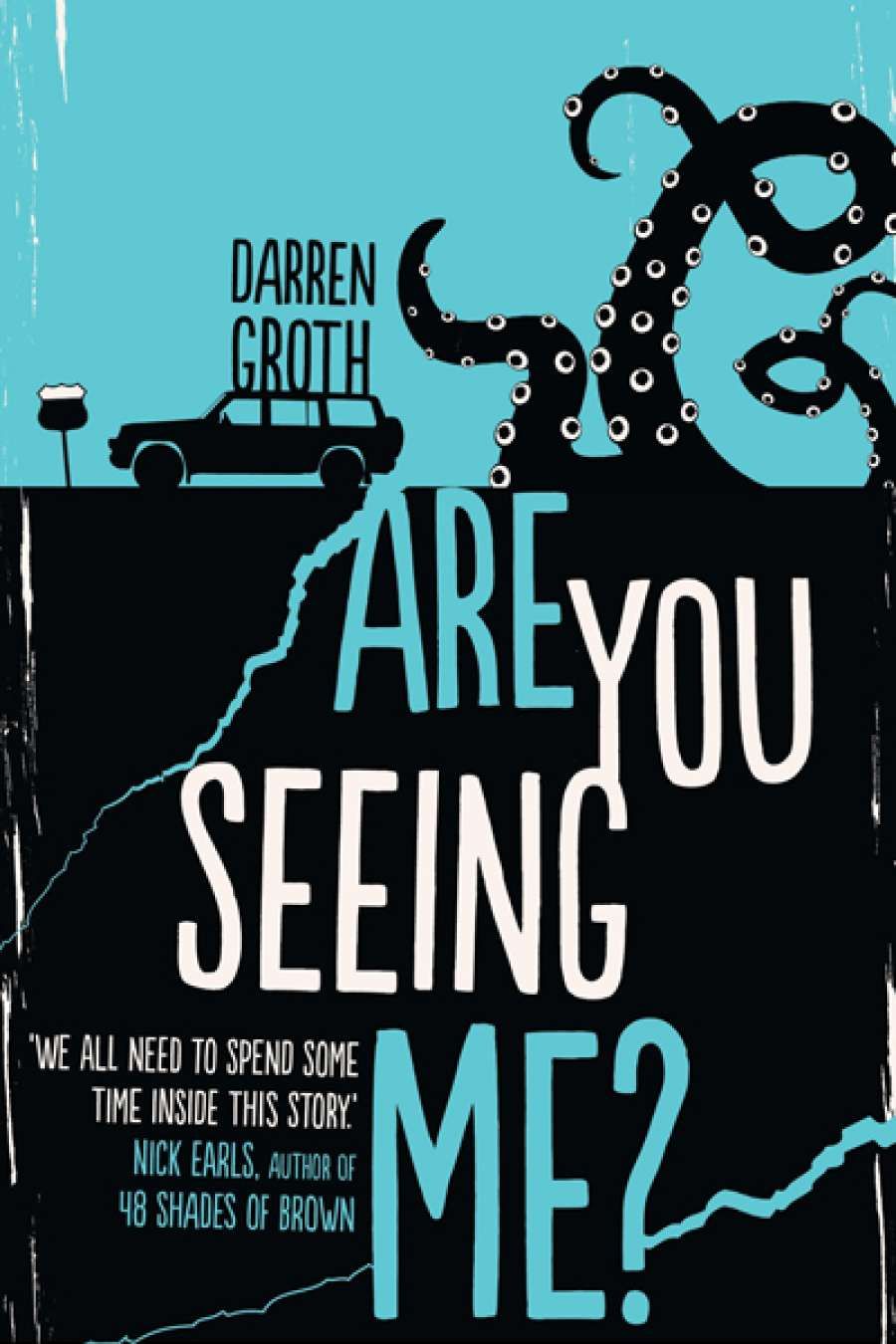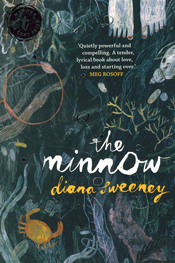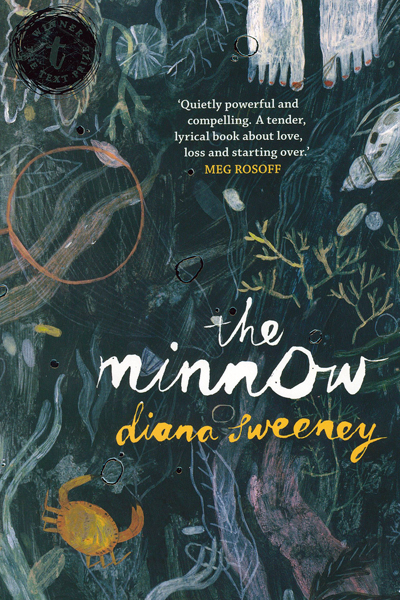
- Free Article: No
- Contents Category: Children's and Young Adult Fiction
- Review Article: Yes
- Article Title: Undertows
- Online Only: No
- Custom Highlight Text:
At its greatest, literature offers us the opportunity to see the world through the eyes of someone else; at its most inviting, through a character whose experience could be our own; at its most powerful, through a view of existence that differs vastly, even frighteningly, from ours. The latter is explored in these two new works of Young Adult fiction that show us intensely ‘other’ ways of seeing.
- Book 1 Title: Are You Seeing Me?
- Book 1 Biblio: Woolshed Press, $18.99 pb, 271 pp
- Book 2 Title: The Minnow
- Book 2 Biblio: Text Publishing $19.99 pb, 263 pp
- Book 2 Cover Small (400 x 600):

- Book 2 Cover (800 x 1200):

- Book 2 Cover Path (no longer required): /images/September_2014/The%20Minnow%20-%20colour.jpg
Darren Groth’s Are You Seeing Me? introduces us to nineteen-year-old twins Perry and Justine, recently orphaned after the death of their father. The novel begins in media res, in a scene of high tension. At an airport security gate, Perry, who suffers from amental disorder, has descended into a petrified level of anxiety. This is the pair’s first step in a life-changing road trip across North America, which will shatter both siblings’ assumptions about their relationship to each other and the world around them.
From the opening epigraph (‘We are all dependent on one another’ – George Bernard Shaw), the themes of dependence and interdependence are foreshadowed. Throughout the novel, Justine, also Perry’s full-time carer, struggles to decide whether moving him to an assisted living centre would be better for both of them. They are described as both brother and sister and ‘a disabled person and their homicidal carer’. Justine is also burdened by the increasing dependency of her boyfriend, Marc, and escapes by reading Robinson Crusoe, comparing her situation with Defoe’s Island of Despair.
Groth’s writing offers continuously deft and striking metaphors and similes: trying to bring Perry out of his panic attack is ‘like trying to draw attention to a lighted candle during a laser show’; impassive onlookers ‘are panes of glass’; a question ‘loiters in the aisle like abandoned luggage’.
The novel, told in the first person and present tense, brings engaging immediacy to Justine and Perry’s journey, while regular excerpts from their late father’s diary provide details about their absent mother. Sections from Justine’s perspective are followed by those from Perry’s point of view, a risky decision considering that the voice of a character like Perry, whose mental state is marked by hyper-sensory perception, could prove wearing for the reader. Thankfully, this shift in perspectives opens up intriguing narrative spaces. The world seen through Perry’s eyes is incredible and overwhelming; he is preoccupied by detail and overwhelmed by waves of paranoia, soothed only by his repeated testing of the ground with a seismometer, which he uses to monitor and predict earth-shattering situations, both environmental and emotional.
By the end it is clear that even those characters who are not formally classified as disabled are sometimes emotionally ‘handicapped’, driven by an impulse to run away from the complexity of existence that Perry sees in all its confounding intricacy.
Similarly told from a first-person perspective is Text Prize Winner The Minnow by Diana Sweeney. Fifteen-year-old Tom, also recently orphaned, struggles to rebuild her world following the loss of her mother, father, and sister in a flood. Both novels use the motif of natural disasters as mirrors of upheavals in the personal lives of their young characters. In Tom’s post-flood environment, nothing is as it seems. The small town has a malevolent undertow; both Tom and those around her are flawed, full of secrets and untrustworthy, taking advantage of each other in the aftermath of shared tragedy. Dependence and its pitfalls again emerge as a theme when Tom, taken in by an older man, becomes a victim of sexual abuse and yet develops an unshakeable attachment to her ‘carer’. Seeking solace, Tom speaks to animals, to the dead, and to her unborn child, who console, advise, and support her as she finds her way through the dark places in which she finds herself. From a glance at the cover illustration, which depicts a heavily shadowed underwater scene, we know we are entering murky waters where boundaries are undefined. Tom’s innocence is irrevocably lost and life follows a bleak course: ‘Nothing much changes. You love someone, they die. You miss them. You grow older.’
Just as Perry uses his seismometer to make sense of traumatic situations, Tom always has her pocket thesaurus close by. She collects and researches new words to try to make meaningful sense of her experience, always seeking synonyms as if to prove that no situation is without an alternative outcome or perspective – even hers.
The story is told through a blend of recollection, present experience, dream, fantasy, and imagination. Tom is the ultimate unreliable narrator, and though this can be a powerful technique, in The Minnow characters and scenes can become disjointed and confusing. People come and go, not returning to the plot for many chapters.This structure challenges chronology and continuity; but it also complements the shifting, fluid qualities of the narrative in which, like the sea, things drift in and out of view.
For those who enjoy narratives that delve into an illuminating alternative consciousness, these two works are highly recommended.


Comments powered by CComment